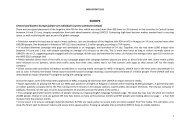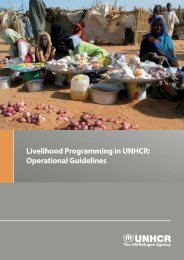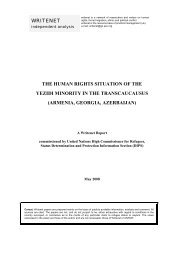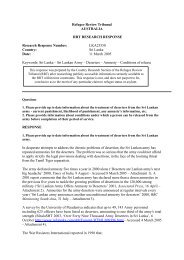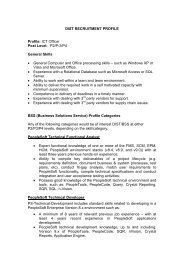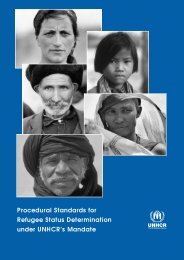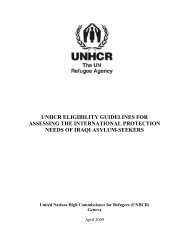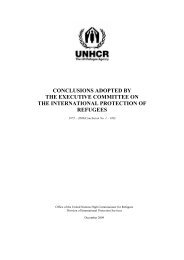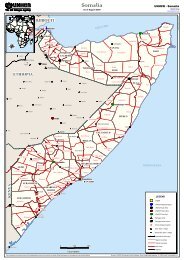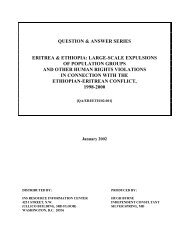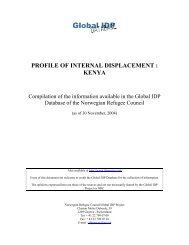UNHCR's ELIGIBILITY GUIDELINES FOR ASSESSING THE ...
UNHCR's ELIGIBILITY GUIDELINES FOR ASSESSING THE ...
UNHCR's ELIGIBILITY GUIDELINES FOR ASSESSING THE ...
You also want an ePaper? Increase the reach of your titles
YUMPU automatically turns print PDFs into web optimized ePapers that Google loves.
D. Internal Flight or Relocation Alternative<br />
A detailed analytical framework for assessing the availability of an internal flight<br />
alternative or internal relocation alternative (IFA/IRA), is contained in UNHCR’s 2003<br />
“Guidelines on International Protection: the “Internal Flight or Relocation Alternative”<br />
within the context of Article 1A(2) of the 1951 Convention and/or 1967 Protocol relating to<br />
the Status of Refugees”. 787<br />
As provided in the Guidelines, in order to assess the possibility of applying an IFA/IRA,<br />
two main sets of analyses should be undertaken, namely whether internal relocation is<br />
1) relevant and, if so, whether it is 2) reasonable. The determination of whether the<br />
proposed internal flight or relocation area is an appropriate alternative in the particular case<br />
requires an assessment over time, taking into account not only the circumstances that gave<br />
rise to the persecution feared, and that prompted flight from the original area, but also<br />
whether the proposed area provides a meaningful alternative in the future.<br />
In the context of Iraq, UNHCR’s analysis distinguishes between the situation in South and<br />
Central Iraq and the situation in the three Northern Governorates. The availability of an<br />
IFA/IRA in the latter area would also depend on whether the individual concerned is from<br />
Central and Southern Iraq or from within the three Governorates themselves.<br />
1. IFA/IRA in Areas of Central and Southern Iraq<br />
UNHCR considers that an internal flight or relocation alternative in Central and Southern<br />
Iraq is on the whole not available, because of the overall ability of agents of persecution to<br />
perpetrate acts of violence with impunity, the widespread violence and prevalent human<br />
rights violations giving rise to new risks of persecution, risks associated with travel, and the<br />
hardship faced in ensuring even basic survival in areas of relocation. When, however, the<br />
availability of an internal flight or relocation alternative must be assessed in a national<br />
procedure, it should be examined cautiously and in the context of the individual claim.<br />
UNHCR’s Guidelines on Internal Flight/Relocation Alternative 788 should be taken into<br />
account.<br />
a) The Relevance Analysis<br />
i. Risk of Persecution or Other Serious Harm Upon Relocation<br />
As indicated in these Guidelines, persecution could emanate from state as well as non-state<br />
agents. Within Central and Southern Iraq, both state and non-state agents of persecution<br />
could pursue their targets throughout and state agents are known to be able to operate with<br />
impunity. In regard to non-state agents of persecution, protection by national authorities<br />
would on the whole not be available given the fact that the national authorities have limited<br />
capacities to enforce law and order, and the security agencies, namely the ISF, are<br />
787<br />
UNHCR, Guidelines on International Protection No. 4: “Internal Flight or Relocation Alternative”, see<br />
above footnote 4.<br />
788<br />
Ibid.<br />
151




